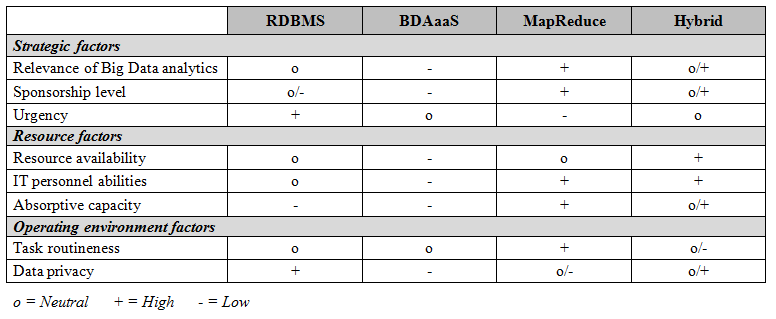|
By intelligently using the information in and around them, organizations are able to improve their decision-making and better realize their objectives. Some authors even claim that organizations may lose competitiveness by not systematically analyzing the available information. However, to obtain the desired insights, data need to be sourced, stored, and analyzed. During the past years, accessing and processing the collected, voluminous, and heterogeneous amounts of data has become increasingly time consuming and complex. With a total of 1.8 zettabyte in 2011, the amount of generated data has not yet reached its climax: as expected by IDC, a global provider of IT market intelligence, the total amount of data collected until the end of 2012 is estimated to be 1.48 times the amount of data collected in previous years, with more than 90% of this data being unstructured. Businesses increasingly use these data masses provided by millions of networked sensors in mobile phones, cashier systems, automobiles, or weather stations to learn more about their customers, suppliers, and operations. This development raises the question of how companies manage to cope with the characteristics of the ever-increasing amount of data, referred to as Big Data. In a recent research project we aimed at providing a set of organizational contingency factors that influence different Big Data strategies organizations may implement. In order to do so, we reviewed existing literature to identify different Big Data strategies as well as contingency factors and synthesized both into a contingency matrix that may support practitioners in choosing a suitable Big Data strategy for their specific context. Impact of identified contingency factors on Big Data strategy choice Based on our analysis, we found that different organizational environments pursue different requirements on a Big Data strategy. To better support practitioners in Big Data strategy choice, we compared the four identified Big Data strategies regarding how well they addressed each of the contingency factors. For instance, when the relevance of Big Data analytics is high in a company, the MapReduce strategy seems most fruitful (resulting in a “+” assessment). However, also a hybrid solution might be valuable in case it follows a MapReduce-dominant approach. If in turn an RDBMS-dominant implementation is chosen, the hybrid strategy is only slightly better than a “pure” RDBMS approach (resulting in a “+/o” assessment).
The research results have recently been accepted for publication: Ebner, K., Bühnen, T. and Urbach, N. (2014) Think Big with Big Data: Identifying Suitable Big Data Strategies in Corporate Environments, Proceedings of the 47th Hawaii International Conference on Systems Sciences (HICSS-47), January 6-9, Hilton Waikoloa, Big Island. (Link)
0 Comments
Leave a Reply. |
Archives
December 2015
Categories
All
|

 RSS Feed
RSS Feed